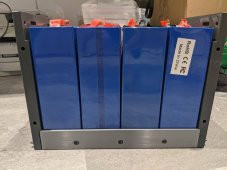Expansion due to normal full charge is almost imperceivable, less than 2 mm in thickness direction. It is graphite negative electrode expansion by about 11% in its volume which graphite is about 20% of total volume of cell so its 11% expansion of 20% of the volume.
Over charging breaks down electrolyte creating mostly CO2 and CO gas that bloats cell. Worse than the bloating is the tars created during electrolyte breakdown clogs up the electrode pores increasing cell impedance.
Bloating gas will eventually diffuse through the pouch if you don't create more by continuing to overcharge.
Some of newer cells manufactured after mid to late 2020 are made with pre-lithiated graphite negative electrode. Pre-lithiation reduces manufacturing charge forming costs. I have seen some of these pre-lithiated cells bloat a little on first few cycles but they eventually diffuse out the gas. Bloated pre-lithiated cell happen because someone charged them before pre-lithiation has done its job of charge forming. They need to sit for several days after cells are assembled by manufacturer. I think they are shipped out too quickly and distributor may charge them too soon. New pre-lithiated cells have a slightly higher 1 KHz AC impedance measurement, about 0.21-0.23 milliohms versus conventional charge formed cell with 0.15-0.18 milliohms for 280-300 AH cells.




